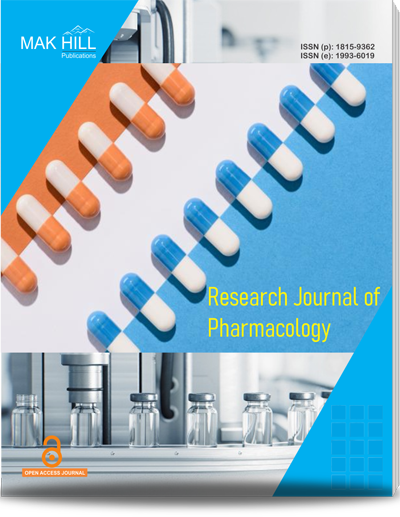
Research Journal of Pharmacology
ISSN: Online 1993-6019ISSN: Print 1815-9362
125
Views
20
Downloads
Abstract
Our aim was to evaluate the prescribing pattern of antimicrobial agents in the Medical intensive care unit. The study of prescribing pattern is a part of medical audit which will monitor, evaluate and suggest modifications in prescribing practices of medical practitioners so as to make medical care rational and cost effective. This was a prospective observational study in 16 bedded medicine intensive care unit and data was collected from March 2018 to November 2018, followed by data compilation and statistical analysis. The sample size was calculated to be 238 using open Epi software. The study revealed doctor’s prescribing habits in a Medicine ICU, with 77.6% of patients receiving antimicrobial agents, accounting for 8.2% of total drugs. Most patients were middle‐aged, predominantly male. Polypharmacy was common, with an average of 9.6 drugs per patient. Cardiovascular emergencies were the main reason for admission, followed by respiratory and central nervous system diseases. Broad‐spectrum antibiotics like ceftriaxone were preferred. Respiratory diseases received the highest antimicrobial prescriptions (31.02%). Variability in prescription was noted, possibly due to different prescribers and lack of guidelines. Improvements could involve implementing an antibiotic policy and routine culture sensitivity testing for common infections. It is extremely necessary to evaluate and monitor the prescribing pattern of antimicrobial from time to time for enabling suitable modifications in prescribing patterns, to increase the therapeutic benefits and also to decrease the adverse effects for optimizing the health care services.
How to cite this article:
Shahnaz Bano, Krishna Kumar Daryani, Lalit Jain and Sarfaraz Ahmed. Prescribing Pattern of Antimicrobial Agents in Medicine Intensive Care Unit of Tertiary Care Teaching Hospital of Central India.
DOI: https://doi.org/10.36478/10.59218/makrjp.2024.1.20.29
URL: https://www.makhillpublications.co/view-article/1815-9362/10.59218/makrjp.2024.1.20.29